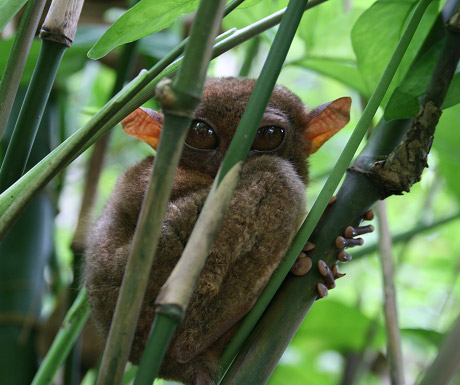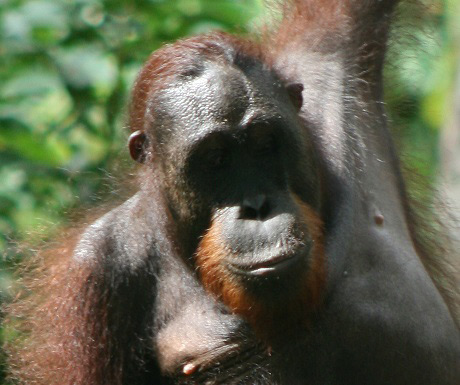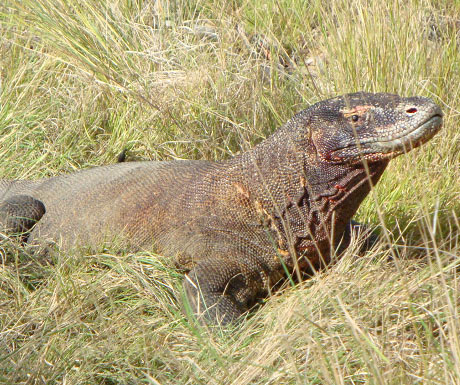Viewing Asias most endangered species
Asia is home to an astounding array of wildlife including many species that are in danger of extinction. Seeing these creatures can not only be difficult, but can also often contribute to their demise. In many places there are schemes in place which enable visitors to not only view but also learn about the animals they have come to admire. In Asia, the creatures below are all under threat of extinction but can still be seen in certain, specialized centres.
The tarsier
The tarsier is the smallest primate in the world and can be found only on a few islands of South East Asia, including those of the Philippines and Borneo. Having evolved little in the past 45 million years, these tiny creatures are rapidly decreasing in numbers. It is estimated that somewhere between five and ten thousand still exist in the wild, but with captive reproduction schemes proving largely unsuccessful and their natural habitat quickly disappearing, that number is dropping fast. One of the best places to see them is the Philippine Tarsier Foundation, on Bohol Island in the Philippines. Be sure to visit the real conservation centre though, as numerous unofficial outlets line the nearby road and are merely money-making businesses that exploit rather than protect the species.
 The orangutan
The orangutan shares approximately 97% of its DNA with humans, which is perhaps why we find it so appealing. Found in the rainforests of Borneo and Sumatra, they are endangered due to the widespread destruction of their natural habitat and poaching. Although it is possible to spot a few animals in the wild (a trip up the Lombok river in Borneo for example is a pretty good place to try and see them), it is actually far easier to get a good look at an organised centre, such as the Sepilok Orangutan rehabilitation Centre, in Sabah, Borneo. Working to help once-captive orangs to re-adjust to life in the rainforest, the centre organises designated feeding times, during which the animals are enticed towards an open platform, on which they will find bananas and other foodstuffs to eat. From a short distance, visitors can observe and take photographs, while expert rangers are on hand to answer questions. This is a great way to get a close up and leisurely view, which most glimpses in the wild rarely afford.
The orangutan
The orangutan shares approximately 97% of its DNA with humans, which is perhaps why we find it so appealing. Found in the rainforests of Borneo and Sumatra, they are endangered due to the widespread destruction of their natural habitat and poaching. Although it is possible to spot a few animals in the wild (a trip up the Lombok river in Borneo for example is a pretty good place to try and see them), it is actually far easier to get a good look at an organised centre, such as the Sepilok Orangutan rehabilitation Centre, in Sabah, Borneo. Working to help once-captive orangs to re-adjust to life in the rainforest, the centre organises designated feeding times, during which the animals are enticed towards an open platform, on which they will find bananas and other foodstuffs to eat. From a short distance, visitors can observe and take photographs, while expert rangers are on hand to answer questions. This is a great way to get a close up and leisurely view, which most glimpses in the wild rarely afford.
 The Komodo dragon
The largest living lizard on the planet, the Komodo dragon is also the most cruel: it feeds by viciously attacking its prey, infecting it with poisonous bacteria and then tearing it to pieces.
The Komodo dragon
The largest living lizard on the planet, the Komodo dragon is also the most cruel: it feeds by viciously attacking its prey, infecting it with poisonous bacteria and then tearing it to pieces.
 Found only on the Indonesian islands of Komodo, Rinca, Padar, and Flores, it is estimated that somewhere between 3000 and 5000 Komodo dragons remain alive in the wild, and although the species has been protected since the 1980s, their numbers continue to drop due to poaching, human encroachment and natural disasters. The best place to see them in their natural environment is on Rinca Island, in Komodo National Park in Indonesia, but be warned, even here with rangers on hand they remain wild and ferocious and a visit is not for the faint-hearted!
Sea turtles
Few places are as fabulous for seeing turtles as the seas surrounding Palawan Island in the Philippines. On a simple snorkeling trip, visitors are likely to see these beautiful creatures casually swimming by. Their survival however is far from certain. Killed for their meat and skins, their eggs too are by some considered a delicacy. Many governments have launched projects to try to preserve their turtle populations and one of the best ways to get a better understanding of the challenges the species face, is to head to a conservation centre such as the one on Miniloc Island. Here, both the nesting beaches and un-hatched eggs are protected, whilst hatchlings when they eventually emerge are released into the sea. Visitors can observe the entire process in the company of expert conservationists and obtain a thorough understanding of these rare and extraordinary creatures.
The whale shark
On dives at various sites in Borneo and the Philippines, I have often hoped to catch a glimpse of this huge, gentle beast in the wild. It has alas yet to happen, probably because the whale shark spends much of its time in very deep water (below 150ft). Often reaching between 12 and 14 metres in length, the whale shark is the largest fish on the planet and I suspect that an encounter might prove in reality to actually be quite intimidating! The closest I have got so far, is a view of a captive shark at the aquarium in Checheng, Taiwan and I was totally in awe at the gentle elegance of this great sea giant. Although technically it is considered as vulnerable rather than endangered, the WWF is actively involved in whale shark preservation. In Donsol Bay in the Philippines, it supports an eco-tourism project enabling visitors to swim with the whale sharks in a responsible way. Something to add to my to do list!
Jane Downs is Co-founder of Islandesia.
Found only on the Indonesian islands of Komodo, Rinca, Padar, and Flores, it is estimated that somewhere between 3000 and 5000 Komodo dragons remain alive in the wild, and although the species has been protected since the 1980s, their numbers continue to drop due to poaching, human encroachment and natural disasters. The best place to see them in their natural environment is on Rinca Island, in Komodo National Park in Indonesia, but be warned, even here with rangers on hand they remain wild and ferocious and a visit is not for the faint-hearted!
Sea turtles
Few places are as fabulous for seeing turtles as the seas surrounding Palawan Island in the Philippines. On a simple snorkeling trip, visitors are likely to see these beautiful creatures casually swimming by. Their survival however is far from certain. Killed for their meat and skins, their eggs too are by some considered a delicacy. Many governments have launched projects to try to preserve their turtle populations and one of the best ways to get a better understanding of the challenges the species face, is to head to a conservation centre such as the one on Miniloc Island. Here, both the nesting beaches and un-hatched eggs are protected, whilst hatchlings when they eventually emerge are released into the sea. Visitors can observe the entire process in the company of expert conservationists and obtain a thorough understanding of these rare and extraordinary creatures.
The whale shark
On dives at various sites in Borneo and the Philippines, I have often hoped to catch a glimpse of this huge, gentle beast in the wild. It has alas yet to happen, probably because the whale shark spends much of its time in very deep water (below 150ft). Often reaching between 12 and 14 metres in length, the whale shark is the largest fish on the planet and I suspect that an encounter might prove in reality to actually be quite intimidating! The closest I have got so far, is a view of a captive shark at the aquarium in Checheng, Taiwan and I was totally in awe at the gentle elegance of this great sea giant. Although technically it is considered as vulnerable rather than endangered, the WWF is actively involved in whale shark preservation. In Donsol Bay in the Philippines, it supports an eco-tourism project enabling visitors to swim with the whale sharks in a responsible way. Something to add to my to do list!
Jane Downs is Co-founder of Islandesia.
 The orangutan
The orangutan shares approximately 97% of its DNA with humans, which is perhaps why we find it so appealing. Found in the rainforests of Borneo and Sumatra, they are endangered due to the widespread destruction of their natural habitat and poaching. Although it is possible to spot a few animals in the wild (a trip up the Lombok river in Borneo for example is a pretty good place to try and see them), it is actually far easier to get a good look at an organised centre, such as the Sepilok Orangutan rehabilitation Centre, in Sabah, Borneo. Working to help once-captive orangs to re-adjust to life in the rainforest, the centre organises designated feeding times, during which the animals are enticed towards an open platform, on which they will find bananas and other foodstuffs to eat. From a short distance, visitors can observe and take photographs, while expert rangers are on hand to answer questions. This is a great way to get a close up and leisurely view, which most glimpses in the wild rarely afford.
The orangutan
The orangutan shares approximately 97% of its DNA with humans, which is perhaps why we find it so appealing. Found in the rainforests of Borneo and Sumatra, they are endangered due to the widespread destruction of their natural habitat and poaching. Although it is possible to spot a few animals in the wild (a trip up the Lombok river in Borneo for example is a pretty good place to try and see them), it is actually far easier to get a good look at an organised centre, such as the Sepilok Orangutan rehabilitation Centre, in Sabah, Borneo. Working to help once-captive orangs to re-adjust to life in the rainforest, the centre organises designated feeding times, during which the animals are enticed towards an open platform, on which they will find bananas and other foodstuffs to eat. From a short distance, visitors can observe and take photographs, while expert rangers are on hand to answer questions. This is a great way to get a close up and leisurely view, which most glimpses in the wild rarely afford.
 The Komodo dragon
The largest living lizard on the planet, the Komodo dragon is also the most cruel: it feeds by viciously attacking its prey, infecting it with poisonous bacteria and then tearing it to pieces.
The Komodo dragon
The largest living lizard on the planet, the Komodo dragon is also the most cruel: it feeds by viciously attacking its prey, infecting it with poisonous bacteria and then tearing it to pieces.
 Found only on the Indonesian islands of Komodo, Rinca, Padar, and Flores, it is estimated that somewhere between 3000 and 5000 Komodo dragons remain alive in the wild, and although the species has been protected since the 1980s, their numbers continue to drop due to poaching, human encroachment and natural disasters. The best place to see them in their natural environment is on Rinca Island, in Komodo National Park in Indonesia, but be warned, even here with rangers on hand they remain wild and ferocious and a visit is not for the faint-hearted!
Sea turtles
Few places are as fabulous for seeing turtles as the seas surrounding Palawan Island in the Philippines. On a simple snorkeling trip, visitors are likely to see these beautiful creatures casually swimming by. Their survival however is far from certain. Killed for their meat and skins, their eggs too are by some considered a delicacy. Many governments have launched projects to try to preserve their turtle populations and one of the best ways to get a better understanding of the challenges the species face, is to head to a conservation centre such as the one on Miniloc Island. Here, both the nesting beaches and un-hatched eggs are protected, whilst hatchlings when they eventually emerge are released into the sea. Visitors can observe the entire process in the company of expert conservationists and obtain a thorough understanding of these rare and extraordinary creatures.
The whale shark
On dives at various sites in Borneo and the Philippines, I have often hoped to catch a glimpse of this huge, gentle beast in the wild. It has alas yet to happen, probably because the whale shark spends much of its time in very deep water (below 150ft). Often reaching between 12 and 14 metres in length, the whale shark is the largest fish on the planet and I suspect that an encounter might prove in reality to actually be quite intimidating! The closest I have got so far, is a view of a captive shark at the aquarium in Checheng, Taiwan and I was totally in awe at the gentle elegance of this great sea giant. Although technically it is considered as vulnerable rather than endangered, the WWF is actively involved in whale shark preservation. In Donsol Bay in the Philippines, it supports an eco-tourism project enabling visitors to swim with the whale sharks in a responsible way. Something to add to my to do list!
Jane Downs is Co-founder of Islandesia.
Found only on the Indonesian islands of Komodo, Rinca, Padar, and Flores, it is estimated that somewhere between 3000 and 5000 Komodo dragons remain alive in the wild, and although the species has been protected since the 1980s, their numbers continue to drop due to poaching, human encroachment and natural disasters. The best place to see them in their natural environment is on Rinca Island, in Komodo National Park in Indonesia, but be warned, even here with rangers on hand they remain wild and ferocious and a visit is not for the faint-hearted!
Sea turtles
Few places are as fabulous for seeing turtles as the seas surrounding Palawan Island in the Philippines. On a simple snorkeling trip, visitors are likely to see these beautiful creatures casually swimming by. Their survival however is far from certain. Killed for their meat and skins, their eggs too are by some considered a delicacy. Many governments have launched projects to try to preserve their turtle populations and one of the best ways to get a better understanding of the challenges the species face, is to head to a conservation centre such as the one on Miniloc Island. Here, both the nesting beaches and un-hatched eggs are protected, whilst hatchlings when they eventually emerge are released into the sea. Visitors can observe the entire process in the company of expert conservationists and obtain a thorough understanding of these rare and extraordinary creatures.
The whale shark
On dives at various sites in Borneo and the Philippines, I have often hoped to catch a glimpse of this huge, gentle beast in the wild. It has alas yet to happen, probably because the whale shark spends much of its time in very deep water (below 150ft). Often reaching between 12 and 14 metres in length, the whale shark is the largest fish on the planet and I suspect that an encounter might prove in reality to actually be quite intimidating! The closest I have got so far, is a view of a captive shark at the aquarium in Checheng, Taiwan and I was totally in awe at the gentle elegance of this great sea giant. Although technically it is considered as vulnerable rather than endangered, the WWF is actively involved in whale shark preservation. In Donsol Bay in the Philippines, it supports an eco-tourism project enabling visitors to swim with the whale sharks in a responsible way. Something to add to my to do list!
Jane Downs is Co-founder of Islandesia.Did you enjoy this article?
Receive similar content direct to your inbox.

